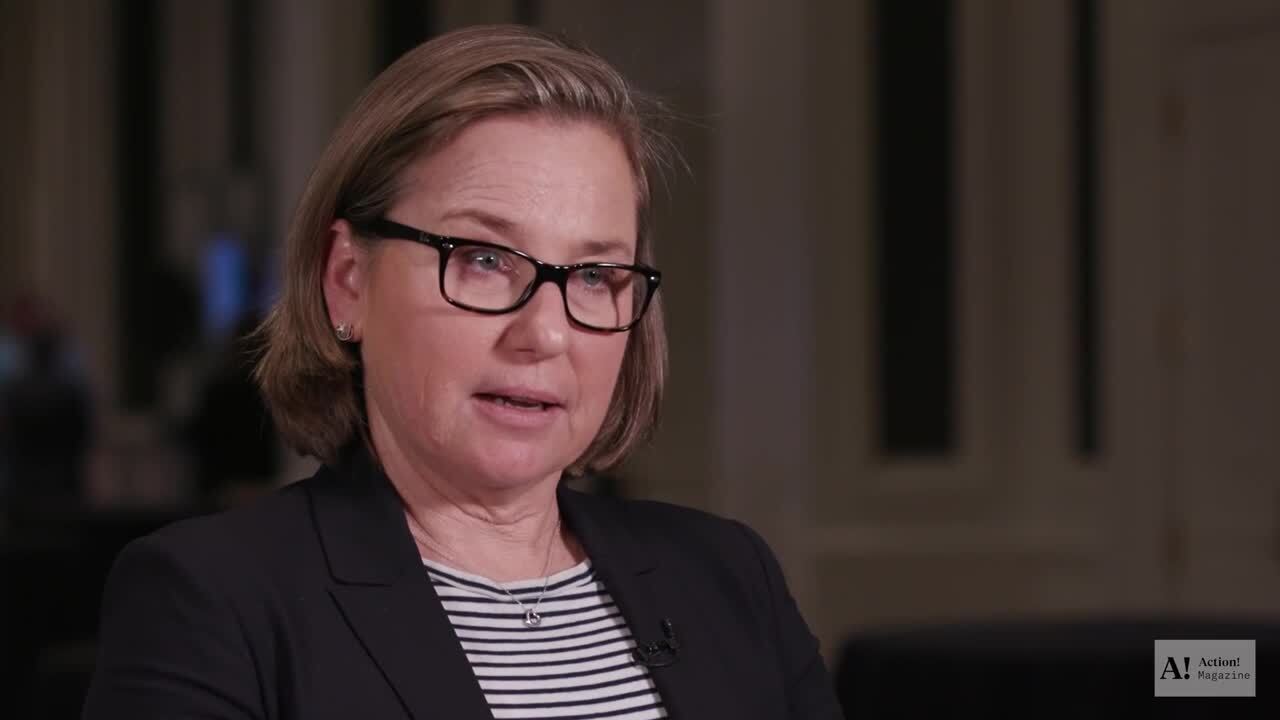With so many financial technology solutions out there, it can be hard to find the best fit for success.
A firm must answer the hard questions, develop a strategy and determine priorities. What are your business goals? How do you want to leverage technology to help empower these goals?
Tricia Haskins, Head of Integrated Solutions at Fidelity, has seen success when firms can answer those two questions. I caught up with her while attending this year's MarketCounsel Summit event. She provided great insight into how to develop an overall advisor technology strategy.
Click on the video below to watch the full interview.

Transcript:
There are struggles out there when it comes to technology. One of the biggest ones that we've seen is just the proliferation of fintech out there. It's really hard to understand, given all of these solutions out there: 'Which ones are the right ones for me?'
The firms that are able to navigate that choice really well are the ones who have an overall technology strategy. You’re thinking about, 'What are the goals for my business? Is it growth? Is it a new segment? Is it deepening customer relationships? Is it all three? What are the technology components? What do I currently have in place? What's out there? What are the options? What are the problems that I'm looking to solve?' And, importantly, how do I want these different capabilities that I'm going to bring in? How do I want them to integrate across all the different components of my tech ecosystem so that workflow becomes seamless across that entire ecosystem?
Integration is one of those terms that could mean a lot of different things to a lot of different people. And we, at Fidelity, we know that's the case – there's a lot of different ways to integrate. So, looking at all of the different solutions out there and taking that step deeper into what kind of integration – is it an API integration? Is it a single sign-on? Is it one direction or two directions? Is it a data feed? Understanding what those different integrations are and how that's going to impact the workflow of the users is really critical. And that's one of the things that we’ve found is really important to have in the Fidelity Integration Exchanges. Allowing the users, allowing our clients, to go in and not only look at all the different solutions out there but see the level of depth of integrations that are available to them.
For those firms that are using technology, perhaps new technology, and they're finding, maybe it isn't the best fit for their solution or for their ecosystem. I really find that the best thing to do there is to look at that as a learning opportunity. So what is it that didn't fit? Is it the types of integration is it the capabilities? Is it the lack of adoption? Is it the user experience?
Really take that information and the learning from that experience, and then apply that to evaluating the next solution. Understanding all those things is going to give you a step ahead when you're looking at other systems to potentially replace that solution that might not have been the best fit for you.
One of the best things that I've seen from firms is when they're really curious. [They want to know] what are the new capabilities that are coming out there? How might they fit into my technology ecosystem? Spend the time to learn about what those capabilities and what the integrations are – for example, in Integration Exchange, we have an entire fintech marketplace, and an advisor or somebody in the operations part of that firm can actually go in and learn about the different technologies that are available and the different levels of integrations.
There are so many solutions out there, so it can be difficult to navigate. If you come back and you think about what your business goals are, how do we want to leverage technology to help empower that? Then go look at the different solutions out there within those two lenses; that's where we've seen real success.
This blog is sponsored by AdvisorEngine Inc. The information, data and opinions in this commentary are as of the publication date, unless otherwise noted, and subject to change. This material is provided for informational purposes only and should not be considered a recommendation to use AdvisorEngine or deemed to be a specific offer to sell or provide, or a specific invitation to apply for, any financial product, instrument or service that may be mentioned. Information does not constitute a recommendation of any investment strategy, is not intended as investment advice and does not take into account all the circumstances of each investor. Opinions and forecasts discussed are those of the author, do not necessarily reflect the views of AdvisorEngine and are subject to change without notice. AdvisorEngine makes no representations as to the accuracy, completeness and validity of any statements made and will not be liable for any errors, omissions or representations. As a technology company, AdvisorEngine provides access to award-winning tools and will be compensated for providing such access. AdvisorEngine does not provide broker-dealer, custodian, investment advice or related investment services.





